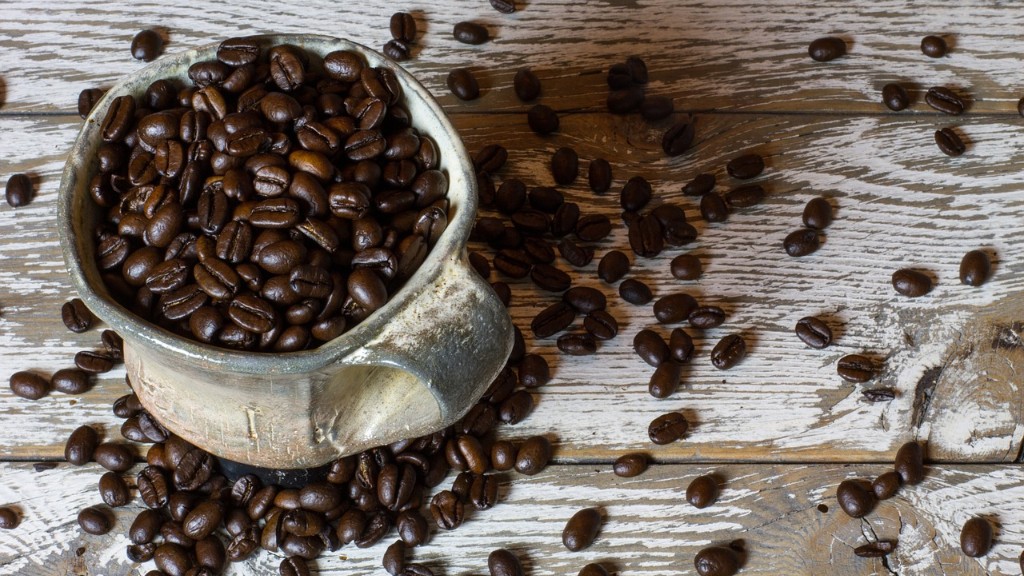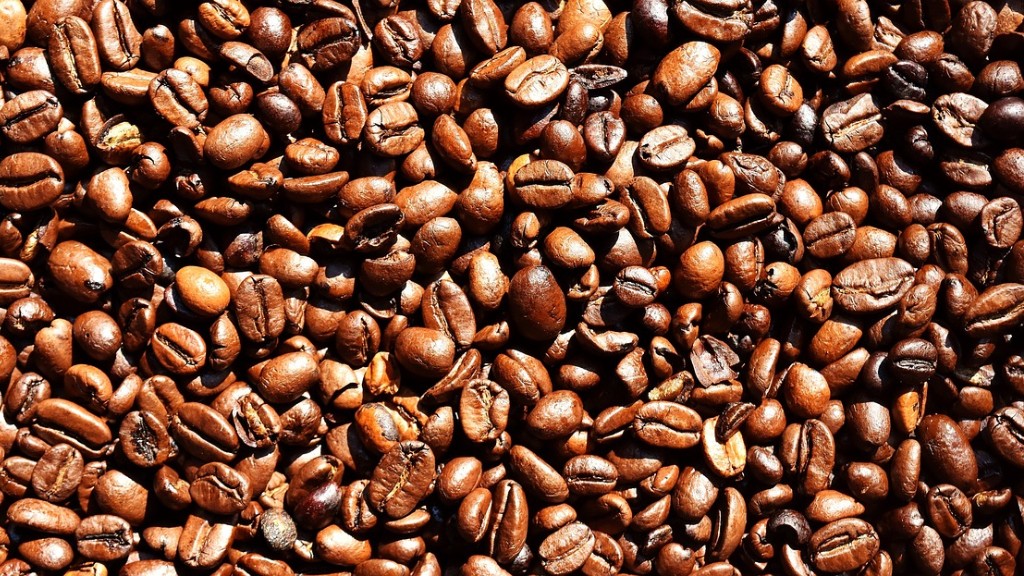A coffee shop’s market can be segmented in a variety of ways. One common method is by location, such as in a neighborhood, business district, or close to a college campus. Another way to segment a coffee shop’s market is by customer type, such as students, young professionals, or retirees. Additionally, coffee shops can also be segmented by the type of coffee they serve, such as fair trade, organic, or specialty coffees.
A coffee shop will typically segment its market based on factors such as location, price, and type of customer. For example, a coffee shop in a busy downtown area may target office workers and tourists, while a coffee shop in a residential neighborhood may target stay-at-home parents and students. The price of coffee and other menu items may also be used to segment the market, with some coffee shops targeting budget-conscious customers and others targeting customers who are willing to pay more for premium coffee.
What market segment does Starbucks target?
Starbucks is a premium coffee brand that mostly caters to upper economic segments. It has a wide range of customers within the 22-50 age group, both male and female. The brand is known for its peaceful ambience and quality coffee.
Market segmentation is a process of dividing the market into subsets of customers who share common characteristics. The four pillars of segmentation that marketers use to define their ideal customer profile (ICP) are demographic, psychographic, geographic, and behavioral.
Demographic segmentation is the process of dividing the market into subsets of customers based on shared characteristics such as age, gender, income, and education level.
Psychographic segmentation is the process of dividing the market into subsets of customers based on shared characteristics such as personality, values, and lifestyle.
Geographic segmentation is the process of dividing the market into subsets of customers based on shared characteristics such as location and climate.
Behavioral segmentation is the process of dividing the market into subsets of customers based on shared characteristics such as purchase history, brand loyalty, and willingness to switch brands.
How do you think Starbucks segmented the coffee market
In the past, Starbucks has segmented its coffee market by product, geographic region, and lifestyle. However, the company is now focusing on targeting specific segments within the coffee market with different marketing strategies. This change in focus will allow Starbucks to better tailor its marketing efforts to the needs of each segment, and ultimately improve its overall coffee sales.
The coffee shop market size is expected to grow at a rapid pace in the coming years. The market was valued at US$ 19882 Bn in 2021 and is expected to reach US$ 26181 Bn by 2029, growing at a CAGR of 35% during the forecast period (2022-2029). The growth of the market is driven by factors such as the growing demand for specialty coffee, the increasing number of coffee shops, and the favorable consumer trends.
Who are the target market of a coffee shop?
There are many different types of coffee drinkers, and each one can be marketed to in a different way. For example, someone who is looking for a quick caffeine fix might be attracted to a coffee shop that has a drive-thru, while someone who is looking for a relaxing experience might be more likely to visit a coffee shop that has comfortable seating and a cozy atmosphere. By understanding the different types of coffee drinkers and what they are looking for, coffee shops can create targeted marketing campaigns that will appeal to each group.
There are many ways to segment a market, but the four main types are demographic, psychographic, behavioral, and geographic. Each has its own advantages and disadvantages, so it’s important to choose the right one for your needs.
Demographic segmentation is the most common and easiest to measure. It involves dividing the market based on factors like age, gender, income, and education. The main disadvantage of this approach is that it can be too broad, making it difficult to target specific consumers.
Psychographic segmentation is based on factors like personality, values, and lifestyle. It can be very effective in reaching certain types of consumers, but it can be difficult to measure.
Behavioral segmentation divides the market based on consumer behavior, such as purchase history, brand loyalty, and willingness to switch brands. This approach can be very effective, but it can be difficult to track behavior over time.
Geographic segmentation divides the market based on location, such as region, city, or even neighborhood. This approach can be very targeted, but it can be difficult to reach consumers in different geographic areas.
What are examples of market segmentation?
In order to be an effective marketer, it is important to understand market segments. Common examples of market segmentation include geographic, demographic, psychographic, and behavioral. By understanding these segments, companies can more effectively market to their target audience and earn a greater return on their investment.
Market segmentation is the process of dividing a market into smaller, more defined groups of customers. There are many different ways to segment a market, but the six most common types of market segmentation are demographic, geographic, psychographic, behavioural, needs-based and transactional.
Demographic segmentation divides a market based on factors such as age, gender, income, education level, occupation and family life cycle. Geographic segmentation divides a market based on geographic location, such as country, region, city or even neighbourhood. Psychographic segmentation divides a market based on lifestyle factors, such as personality, values, interests and attitudes. Behavioural segmentation divides a market based on customer behaviours, such as benefit sought, occasion, user status, loyalty status, buyer readiness and usage rate. Needs-based segmentation divides a market based on customer needs, such as anticipated needs, unfulfilled needs and potential needs. Transactional segmentation divides a market based on customer transaction history, such as purchase frequency, product mix, value of purchases and channels used.
There are many benefits to market segmentation, including the ability to better understand and serve your target market, more effectively allocate marketing resources and develop more targeted marketing campaigns. However, market
How does Coca Cola segment its market
Coca-Cola’s market segmentation focuses on four various elements, namely geographic, demographic, psychographic, and behavioral. The company has a wide range of products that cater to different groups of people all over the world. As such, Coca-Cola has distinguished itself as a true global brand. The company’s marketing strategy takes into account the various preferences of people in different parts of the world, and offers products that are relevant to them. Coca-Cola’s segmentation strategy has been very successful in helping the company achieve its goals.
Starbucks has long been known for its premium pricing strategy, and it has continued to be successful in recent years thanks to its focus on specific product differentiation, communication, and understanding value. These three key factors have allowed Starbucks to maintain its high prices even as the overall coffee market has become more competitive.Differentiation is key for Starbucks because it allows the company to communicate the unique value of its products to customers. Starbucks has built a strong reputation for premium coffee, and it has been able to command higher prices thanks to its differentiated products. The company has also been effective in communicating the value of its products to customers through its marketing and advertising. By reinforcing the premium image of its brand, Starbucks has been able to keep its prices high even as the overall coffee market has become more competitive. customers are willing to pay more for Starbucks coffee because they perceive it to be of higher quality than other brands.
Starbucks has long been known for its premium pricing strategy, and it has continued to be successful in recent years thanks to its focus on specific product differentiation, communication, and understanding value. These three key factors have allowed Starbucks to maintain its high prices even as the overall coffee market has become more competitive.Differentiation is key for Starbucks because it allows the company to
What is behavioral segmentation of Starbucks?
Starbucks is using behavioral segmentation to target their regular morning customers with an incentive to get them back in for another purchase later in the day. By targeting their regular customers, they are able to offer a discount or incentive that will encourage them to come back later in the day. This allows Starbucks to keep their customer base engaged and coming back for more.
It’s no secret that coffee is one of the most popular beverages in the United States. But did you know that the most devoted demographic of coffee drinkers in the US is those aged 60 or older? Around 72% of Americans who are 60 or older drink coffee every single day.
There are a few reasons why this demographic is the most dedicated to their coffee habit. For one, coffee provides a much-needed energy boost for seniors who may not be as active as they once were. Additionally, drinking coffee has been shown to have health benefits like reducing the risk of dementia and Alzheimer’s disease.
So if you’re over the age of 60, make sure to enjoy your cup of coffee each and every day!
Where are the largest markets for coffee
The coffee market in Europe is expected to continue to grow in the coming years, with a projected growth rate of 3.3% per year between 2021 and 2025. This growth will be driven by factors such as the increasing popularity of coffee among younger consumers and the growing demand for premium coffee products.
The coffee market is expected to grow significantly in the next few years, reaching $49.55 billion by 2023. This represents a compound annual growth rate (CAGR) of 4.47% from 2018 to 2023.
The market is being driven by the growing popularity of specialty coffees, as well as the increasing demand for convenient and easy-to-prepare coffee products. The rise of the millennial generation, who are more likely to seek out new experiences and are willing to pay premium prices for quality coffee, is also driving market growth.
There are a few challenges that the coffee market is facing, such as thethreat of substitutes, the volatile price of coffee beans, and the impact of climate change on coffee-growing regions. However, the market is expected to continue growing at a strong pace in the next few years.
What is a real life example of market segmentation?
There are many different ways to segment a market, but some common examples include:
– demographics (age, gender, income, etc.)
– geography (region, city, country, etc.)
– psychographics (lifestyle, personality, interests, etc.)
By understanding these different dimensions of a customer base, businesses can more effectively target their marketing and advertising efforts to reach the right people with the right message.
The process of market segmentation helps companies to target their marketing efforts more effectively and efficiently. By dividing potential buyers into segments, and then grouping products into categories, companies can better understand which products are most likely to be of interest to each segment. Additionally, by developing a market-product grid and estimating market sizes, companies can better assess which markets are most promising and worth targeting. Finally, by taking marketing actions to reach target markets, companies can more effectively reach their desired audiences.
Warp Up
There is no one answer to this question as it depends on the specific coffee shop and what their goals are. However, some common ways that coffee shops segment their market include by geographic location, type of customer, and time of day.
Different coffee shops will segment their market in different ways, but some common methods include segmenting by geographic location, type of customer, and type of coffee. By segmenting its market, a coffee shop can more effectively target its advertising and promotion to specific groups of customers that are most likely to purchase its coffee.





